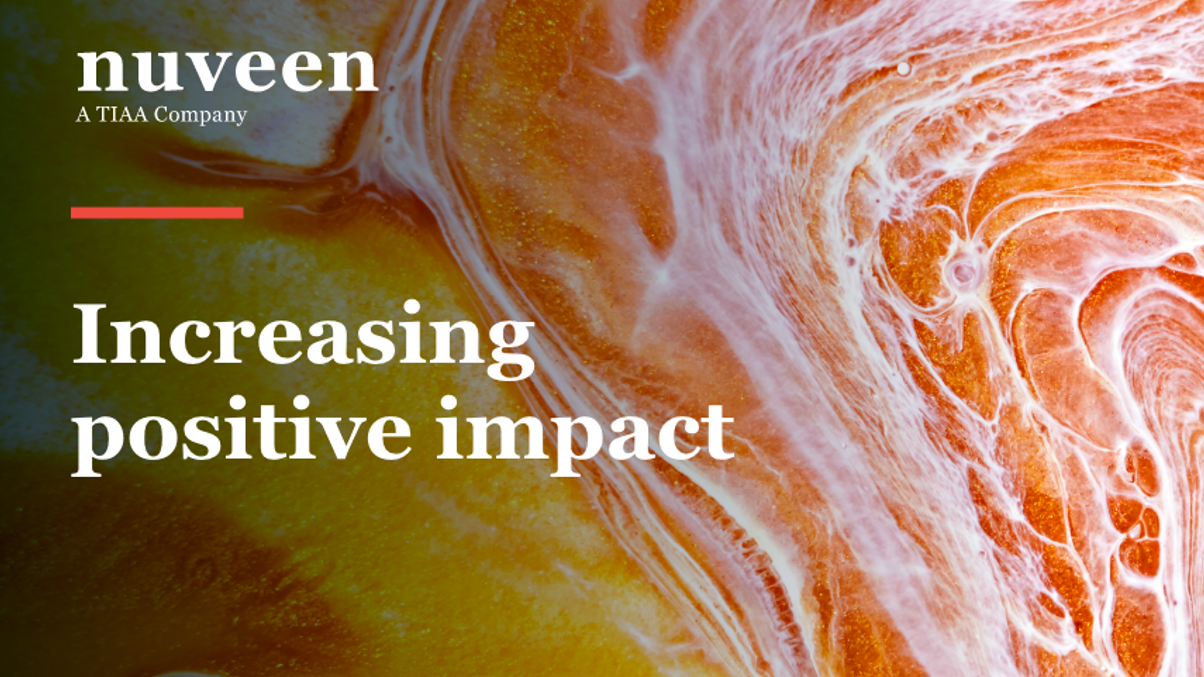Increasing positive impact: how to make investing matter

 More and more institutional investors are looking to understand the non-financial impact of their investments.
More and more institutional investors are looking to understand the non-financial impact of their investments.
Almost three-quarters (74%) either consider or plan to consider the environmental and societal impact of their investment decisions, according to Nuveen’s 2023 EQuilibrium survey of institutional investors around the world. Of this group, 61% agree that impact investments will be an increasingly important allocation for them in the coming years.
Fundamental to an impact investment programme is the ability to measure, track and report those non-financial impacts. Nuveen’s latest paper Impact measurement and reporting: Insights from an insurer’s experience discusses the challenges and solutions in achieving this. The insights are drawn from the firm’s impact investment experience, which stems from its unique relationship with its parent, insurer TIAA, which has a long history of impact investing.
A key finding of the paper is, just as different asset classes and strategies can create different impacts, they also produce different types of reports. But what do investors need to think about when they approach impact investing?
Asset class considerations
Some asset classes lend themselves more readily than others to pursuing specific impact themes.
Real estate and affordable housing are one example, timberland and carbon storage another. But there are many asset classes available — private and public, equity and debt — that can be used to pursue impact objectives. And these different asset classes offer different levers, which generally cluster around:
- Transparency and access to data and information, and
- The degree of control and contribution an investor can make.
Information is key to assessing the investment’s suitability for a portfolio and its likelihood of meeting its impact objectives, as well as determining its success.
Somewhat tied to this is investor contribution. How much control do investors have over the investment — be it a listed or unlisted company — and how much influence do they have over the strategy that will deliver on the impact?
Private capital
Currently, only some asset classes can offer a direct line from capital investment to impact outcome. Private assets make up the bulk of this as we see from the Global Impact Investing Network’s (GIIN’s) 2023 impact investing allocations, activity and performance study. Private equity is the most popular, with 69% of impact investors using this asset class1.
Private equity investors are likely to have a high contribution to the impact outcome, given that they provide capital that the organisation may not have been able to obtain from other sources. This level of ownership could also come with a seat on the board, from which the private equity investor can influence strategy to ensure the success of both the impact and financial goals.
Public markets
Being able to follow the capital is also feasible in some areas of publicly traded fixed income markets, such as in cases where a bond’s use of proceeds are funding specific impact programmes.
Issuers of such bonds will provide the information and necessary documentation to investors to show how funds will be used to achieve the impact objectives, and how that is measured and tracked.
Historically, impact investing in public equity markets has been more difficult. While public companies can provide clear and standardised information to help investors navigate the selection, validation and reporting of impact investments, the challenge is establishing the investor contribution directly.
This is especially true as the influence is arguably lower given the number of equity investors in a publicly listed company, making it more difficult for investors to take credit for a positive impact created by that company and tie it back to their intentional impact goals.
That said, public equity investors have some unique tools available that support intentional impact objectives: engagement and proxy voting. By directly engaging with a public company, and by using shareholder rights to vote proxies in a manner that aligns with impact objectives, public equity investors can contribute to real world outcomes.
An impact investing roadmap
There are several key questions that investors should ask when selecting assets to make an impact:
- Does your organisation have access to information to understand the impact and make decisions across asset classes?
- Does the investment offer the degree of control, and therefore contribution to making an impact, that your organisation wants?
- Can your organisation leverage its experience and expertise to expand portfolio objectives to include impact?
- Is the potential financial return competitive compared with similar non-impact options in the same asset class?
Answering these questions and working with an asset manager with direct experience will help investors focus their impact investment programme.
Click here for more best practices in impact investing
Source
1 - Hand, D., Sunderji, S., Pardo, N. (2023) 2023 Market GIINsight: Impact Investing Allocations, Activity & Performance. The Global Impact Investing Network (GIIN). New York.


